James Kenneth Galbraith in The Guardian:
 The first big need is medical supplies, facilities and personnel. That is why we need to finance immediate domestic production of masks, oxygen tanks, ventilators and the construction and staffing of field hospitals, including the conversion of existing structures such as hotels, dormitories and stadiums, and the hiring and upgrading of staff.
The first big need is medical supplies, facilities and personnel. That is why we need to finance immediate domestic production of masks, oxygen tanks, ventilators and the construction and staffing of field hospitals, including the conversion of existing structures such as hotels, dormitories and stadiums, and the hiring and upgrading of staff.
Ideally HHS should finance supplies, the army corps of engineers should run construction, and Fema should manage and coordinate. The Federal Reserve should be empowered to buy unlimited debt from state and local governments and both debt and equity from private companies. If Congress cannot agree quickly on specifics, create a government-owned Health Finance Corporation and give it unlimited full-faith-and-credit bonding authority, as was done for the Depression and the second world war.
Maintaining vital civilian supplies, especially food, medicines and fuel, is the second big need. This is a two-part problem. The first part is to make sure that there are goods in the stores and pharmacies, and that gas stations and drive-through restaurants can remain open. The second part is to ensure that those at home have the means to pay, and that local distribution remains orderly.
To keep supplies flowing, there must be higher pay and credible protections for essential workers, such as drivers, stockers, checkout clerks and security guards. Amazon and Walmart are already raising pay. Groceries, pharmacies and service stations must most urgently protect their workers, who are exposed to hundreds of customers every hour, from getting sick. After healthcare, protection should go there. Distribution networks will break if stores can’t stay open or if shoppers won’t go in.
More here.

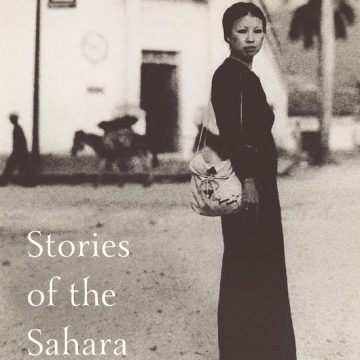 As I read, I kept wondering why Sanmao’s persona was so magnetic. Is it simply because she was so unusual, out there in the vast and largely unpeopled desert, likely the only Taiwanese woman for miles around? Part of the draw of Stories of the Sahara is that it promises to satisfy our curiosity—what was she even doing there? But I couldn’t shake a sense of vertigo. I learned of Sanmao’s existence recently, through a teacher who had in turn learned about her from an article in the New York Times. And yet: “Of course we know who Sanmao is,” my parents told me over the phone. They grew up in Taiwan in the 1970s; they were in college when Sanmao began publishing her Saharan dispatches. One of my mom’s go-to karaoke songs is “The Olive Tree”—Sanmao wrote the lyrics. (“Don’t ask from where I have come / My home is far, far away.”) Who was this person, whose stories had traveled—across far-flung borders and multiple language barriers—from my parents’ lives into my own?
As I read, I kept wondering why Sanmao’s persona was so magnetic. Is it simply because she was so unusual, out there in the vast and largely unpeopled desert, likely the only Taiwanese woman for miles around? Part of the draw of Stories of the Sahara is that it promises to satisfy our curiosity—what was she even doing there? But I couldn’t shake a sense of vertigo. I learned of Sanmao’s existence recently, through a teacher who had in turn learned about her from an article in the New York Times. And yet: “Of course we know who Sanmao is,” my parents told me over the phone. They grew up in Taiwan in the 1970s; they were in college when Sanmao began publishing her Saharan dispatches. One of my mom’s go-to karaoke songs is “The Olive Tree”—Sanmao wrote the lyrics. (“Don’t ask from where I have come / My home is far, far away.”) Who was this person, whose stories had traveled—across far-flung borders and multiple language barriers—from my parents’ lives into my own? The Telegraph has branded the monkey-puzzle a “love-it-or-loathe-it tree.” Tony Kirkham, Head of the Arboretum, Gardens, and Horticultural Services at the Royal Botanic Gardens, Kew confirmed as much by phone: “Mhm. We call it the Marmite Tree.” Whether you go for the monkey-puzzle depends on how you feel about a Tim Burton cover of Dr. Seuss’s Truffula. Its spiraling leaves are as sharp as shivs, and some people effuse that the species is a “fantastic product.” “It’s one of those few trees that you can’t climb,” Kirkham noted. (You certainly cannot hug it.) He thinks the tree is grand, and when I mentioned monkey-puzzles to my friend Mitch Owens, AD’s decorative arts editor, Owens told me, “I adore them.” Others report back on the boughs as “savage curlicues,” “a nightmare to work in and around.” On a plant that can reach 160 feet and live 2,000 years, those branches hold forth like topiarian antenna, sending/receiving who knows what to/from who knows what galaxy.
The Telegraph has branded the monkey-puzzle a “love-it-or-loathe-it tree.” Tony Kirkham, Head of the Arboretum, Gardens, and Horticultural Services at the Royal Botanic Gardens, Kew confirmed as much by phone: “Mhm. We call it the Marmite Tree.” Whether you go for the monkey-puzzle depends on how you feel about a Tim Burton cover of Dr. Seuss’s Truffula. Its spiraling leaves are as sharp as shivs, and some people effuse that the species is a “fantastic product.” “It’s one of those few trees that you can’t climb,” Kirkham noted. (You certainly cannot hug it.) He thinks the tree is grand, and when I mentioned monkey-puzzles to my friend Mitch Owens, AD’s decorative arts editor, Owens told me, “I adore them.” Others report back on the boughs as “savage curlicues,” “a nightmare to work in and around.” On a plant that can reach 160 feet and live 2,000 years, those branches hold forth like topiarian antenna, sending/receiving who knows what to/from who knows what galaxy.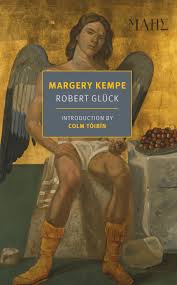 The cumulative strength of the New Narrative, which consisted of a core group of writers who took government-funded workshops run by Glück and the similarly under-sung Bruce Boone as well as some kindred, famous spirits far from Northern California—Kathy Acker, Dennis Cooper, Gary Indiana, and Chris Kraus—ensured that Glück’s name has remained in certain corners of the American literary edifice over the past few decades. Yet time and a shifting sensibility has relegated his own fiction to creaky personal libraries such as my own. I crack open original editions of Jack the Modernist and Margery Kempe and see the names of lost, idealistic imprints, SeaHorse and High Risk Books, which went down with the sinking ship of American publishing while larger houses bought space on the lifeboats. The paper trail of gay literature—put out by presses little and big—is inherently splotchy: so many people who had reason to remember died of AIDS.
The cumulative strength of the New Narrative, which consisted of a core group of writers who took government-funded workshops run by Glück and the similarly under-sung Bruce Boone as well as some kindred, famous spirits far from Northern California—Kathy Acker, Dennis Cooper, Gary Indiana, and Chris Kraus—ensured that Glück’s name has remained in certain corners of the American literary edifice over the past few decades. Yet time and a shifting sensibility has relegated his own fiction to creaky personal libraries such as my own. I crack open original editions of Jack the Modernist and Margery Kempe and see the names of lost, idealistic imprints, SeaHorse and High Risk Books, which went down with the sinking ship of American publishing while larger houses bought space on the lifeboats. The paper trail of gay literature—put out by presses little and big—is inherently splotchy: so many people who had reason to remember died of AIDS.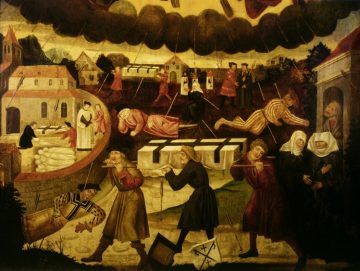 It is not surprising to find Rusty Reno, editor of First Things,
It is not surprising to find Rusty Reno, editor of First Things,  Drugs that slow or kill the novel coronavirus, called severe acute respiratory syndrome coronavirus 2 (SARS-CoV-2), could save the lives of severely ill patients, but might also be given prophylactically to protect health care workers and others at high risk of infection. Treatments may also reduce the time patients spend in intensive care units, freeing critical hospital beds. Scientists have suggested dozens of existing compounds for testing, but WHO is focusing on what it says are the four most promising therapies: an experimental antiviral compound called remdesivir; the malaria medications chloroquine and hydroxychloroquine; a combination of two HIV drugs, lopinavir and ritonavir; and that same combination plus interferon-beta, an immune system messenger that can help cripple viruses. Some data on their use in COVID-19 patients have already emerged—the HIV combo failed in a small study in China—but WHO believes a large trial with a greater variety of patients is warranted.
Drugs that slow or kill the novel coronavirus, called severe acute respiratory syndrome coronavirus 2 (SARS-CoV-2), could save the lives of severely ill patients, but might also be given prophylactically to protect health care workers and others at high risk of infection. Treatments may also reduce the time patients spend in intensive care units, freeing critical hospital beds. Scientists have suggested dozens of existing compounds for testing, but WHO is focusing on what it says are the four most promising therapies: an experimental antiviral compound called remdesivir; the malaria medications chloroquine and hydroxychloroquine; a combination of two HIV drugs, lopinavir and ritonavir; and that same combination plus interferon-beta, an immune system messenger that can help cripple viruses. Some data on their use in COVID-19 patients have already emerged—the HIV combo failed in a small study in China—but WHO believes a large trial with a greater variety of patients is warranted.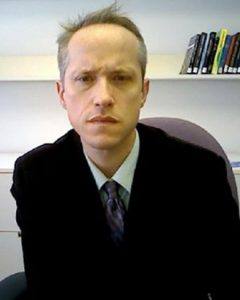 Though mild, I have what I am fairly sure are the symptoms of coronavirus. Three weeks ago I was in extended and close contact with someone who has since tested positive. When I learned this, I spent some time trying to figure out how to get tested myself, but now the last thing I want to do is to go stand in a line in front of a Brooklyn hospital along with others who also have symptoms. My wife and I have not been outside our apartment since March 10th. We have opened the door just three times since then, to receive groceries that had been left for us by an unseen deliveryman, as per our instructions, on the other side. We read of others going on walks, but that seems like a selfish extravagance when you have a dry cough and a sore throat. This is the smallest apartment I’ve ever lived in. I am noticing features of it, and of the trees, the sky and the light outside our windows, that escaped my attention—shamefully, it now seems—over the first several months since we arrived here in August. I know when we finally get out I will be like the protagonist of Halldór Laxness’s stunning novel, World Light, who, after years of bedridden illness, weeps when he bids farewell to all the knots and grooves in the wood beams of his attic ceiling.
Though mild, I have what I am fairly sure are the symptoms of coronavirus. Three weeks ago I was in extended and close contact with someone who has since tested positive. When I learned this, I spent some time trying to figure out how to get tested myself, but now the last thing I want to do is to go stand in a line in front of a Brooklyn hospital along with others who also have symptoms. My wife and I have not been outside our apartment since March 10th. We have opened the door just three times since then, to receive groceries that had been left for us by an unseen deliveryman, as per our instructions, on the other side. We read of others going on walks, but that seems like a selfish extravagance when you have a dry cough and a sore throat. This is the smallest apartment I’ve ever lived in. I am noticing features of it, and of the trees, the sky and the light outside our windows, that escaped my attention—shamefully, it now seems—over the first several months since we arrived here in August. I know when we finally get out I will be like the protagonist of Halldór Laxness’s stunning novel, World Light, who, after years of bedridden illness, weeps when he bids farewell to all the knots and grooves in the wood beams of his attic ceiling. I had a bone marrow transplant in 2017. Most people don’t really know what that is. In the simplest possible terms, it means that my doctors gave me a new immune system, by replacing my sick bone marrow with healthy bone marrow from my sister.
I had a bone marrow transplant in 2017. Most people don’t really know what that is. In the simplest possible terms, it means that my doctors gave me a new immune system, by replacing my sick bone marrow with healthy bone marrow from my sister. Bill Gates rebuked proposals, floated over the last two days by leaders like Donald Trump, to reopen the global economy despite
Bill Gates rebuked proposals, floated over the last two days by leaders like Donald Trump, to reopen the global economy despite  It happened slowly and then suddenly. On Monday, March 9th, the spectre of a pandemic in New York was still off on the puzzling horizon. By Friday, it was the dominant fact of life. New Yorkers began to adopt a grim new dance of “social distancing.” On a sparsely peopled 5 train, heading down to Grand Central Terminal on Saturday morning, passengers warily tried to achieve an even, strategic spacing, like chess pieces during an endgame: the rook all the way down here, but threatening the king from the back row. Then, when the doors opened, they got off the train one by one, in single, hesitant file, unlearning in a minute New York habits ingrained over lifetimes, the elbowed rush for the door. In the relatively empty subway cars, one can focus on the human details of the riders. A. J. Liebling, in a piece published in these pages some sixty years ago, recounted the tale of a once famous New York murder, in which the headless torso of a man was found wrapped in oilcloth, floating in the East River. The hero of the tale, as Liebling chose to tell it, was a young reporter for the great New York World, who identified the body by type before anyone else did: he saw that the corpse’s fingertips were wrinkled in a way that characterized “rubbers”—masseurs—in Turkish baths. Only someone whose hands were wet that often would have those fingertips. On the subway, in the street, nearly everyone has rubbers’ hands now, with skin shrivelled from excessive washing.
It happened slowly and then suddenly. On Monday, March 9th, the spectre of a pandemic in New York was still off on the puzzling horizon. By Friday, it was the dominant fact of life. New Yorkers began to adopt a grim new dance of “social distancing.” On a sparsely peopled 5 train, heading down to Grand Central Terminal on Saturday morning, passengers warily tried to achieve an even, strategic spacing, like chess pieces during an endgame: the rook all the way down here, but threatening the king from the back row. Then, when the doors opened, they got off the train one by one, in single, hesitant file, unlearning in a minute New York habits ingrained over lifetimes, the elbowed rush for the door. In the relatively empty subway cars, one can focus on the human details of the riders. A. J. Liebling, in a piece published in these pages some sixty years ago, recounted the tale of a once famous New York murder, in which the headless torso of a man was found wrapped in oilcloth, floating in the East River. The hero of the tale, as Liebling chose to tell it, was a young reporter for the great New York World, who identified the body by type before anyone else did: he saw that the corpse’s fingertips were wrinkled in a way that characterized “rubbers”—masseurs—in Turkish baths. Only someone whose hands were wet that often would have those fingertips. On the subway, in the street, nearly everyone has rubbers’ hands now, with skin shrivelled from excessive washing. Hospitals in New York City are gearing up to use the blood of people who have recovered from COVID-19 as a possible antidote for the disease. Researchers hope that the century-old approach of infusing patients with the antibody-laden blood of those who have survived an infection will help the metropolis — now the US epicentre of the outbreak — to avoid the fate of Italy, where intensive-care units (ICUs) are so crowded that doctors have turned away patients who need ventilators to breathe. The efforts follow studies in China that attempted the measure with plasma — the fraction of blood that contains antibodies, but not red blood cells — from people who had recovered from COVID-19. But these studies have reported only preliminary results so far. The convalescent plasma approach has also seen modest success during past severe acute respiratory syndrome (SARS) and Ebola outbreaks — but US researchers are hoping to increase the value of the treatment by selecting donor blood that is packed with antibodies and giving it to the patients who are most likely to benefit.
Hospitals in New York City are gearing up to use the blood of people who have recovered from COVID-19 as a possible antidote for the disease. Researchers hope that the century-old approach of infusing patients with the antibody-laden blood of those who have survived an infection will help the metropolis — now the US epicentre of the outbreak — to avoid the fate of Italy, where intensive-care units (ICUs) are so crowded that doctors have turned away patients who need ventilators to breathe. The efforts follow studies in China that attempted the measure with plasma — the fraction of blood that contains antibodies, but not red blood cells — from people who had recovered from COVID-19. But these studies have reported only preliminary results so far. The convalescent plasma approach has also seen modest success during past severe acute respiratory syndrome (SARS) and Ebola outbreaks — but US researchers are hoping to increase the value of the treatment by selecting donor blood that is packed with antibodies and giving it to the patients who are most likely to benefit. I personally believe we will blunt this epidemic, but I think we wasted a good four to six weeks largely because of lack of testing and lack of a certain preparedness. But I think we could still make a difference and bring it under control with very harsh measures.
I personally believe we will blunt this epidemic, but I think we wasted a good four to six weeks largely because of lack of testing and lack of a certain preparedness. But I think we could still make a difference and bring it under control with very harsh measures.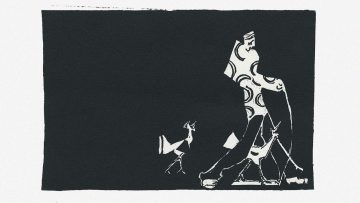 As the subtitle of this collection of essays plainly implies, Barnes did modernism her way. She might have been ambivalent about the movement, resulting in what Daniela Caselli calls her “aesthetics of uncertainty”. But there is no doubting her credentials as a modernist mover and shaker: as a Left Bank journalist, an interviewer of James Joyce, the author of that late modernist masterpiece Nightwood (1936) and the beneficiary of Peggy Guggenheim’s largesse. Yet Barnes also slips away from easy chronology and canonization, not least because of her longevity. Born in 1892, she died in 1982, at the age of ninety, having outlived many of her peers by decades. On its dust jacket and between chapters, Shattered Objects acknowledges that longevity by featuring photographs of her in later life. The visual representation matters. Barnes’s reputation has long been framed as a story of decline – as that of a once dazzling author turned (by the mid-century) recluse.
As the subtitle of this collection of essays plainly implies, Barnes did modernism her way. She might have been ambivalent about the movement, resulting in what Daniela Caselli calls her “aesthetics of uncertainty”. But there is no doubting her credentials as a modernist mover and shaker: as a Left Bank journalist, an interviewer of James Joyce, the author of that late modernist masterpiece Nightwood (1936) and the beneficiary of Peggy Guggenheim’s largesse. Yet Barnes also slips away from easy chronology and canonization, not least because of her longevity. Born in 1892, she died in 1982, at the age of ninety, having outlived many of her peers by decades. On its dust jacket and between chapters, Shattered Objects acknowledges that longevity by featuring photographs of her in later life. The visual representation matters. Barnes’s reputation has long been framed as a story of decline – as that of a once dazzling author turned (by the mid-century) recluse. When you look at the work of an artist like Richard Serra, or better yet, stand next to a classic Serra piece, you begin to understand how important the physical problem of balance and uprightness is for contemporary sculpture. Take one such classic work, Fulcrum (1987). The work consists of five fifty-five-foot tall slabs of COR-TEN steel. It dominates one of the entrances to the Liverpool Street station in London. Standing next to Fulcrum can be genuinely scary, all the more so when (and if) you realize that the huge slabs of steel are balanced one against the other simply by weight and angle. So, these slabs of steel can, theoretically, kill you. In fact, Serra’s sculptures have killed before and might do so again. Serra’s Sculpture No. 3 famously ended the life of a rigger named Raymond Johnson, who was crushed by it during installation at the Walker Art Center in 1977.
When you look at the work of an artist like Richard Serra, or better yet, stand next to a classic Serra piece, you begin to understand how important the physical problem of balance and uprightness is for contemporary sculpture. Take one such classic work, Fulcrum (1987). The work consists of five fifty-five-foot tall slabs of COR-TEN steel. It dominates one of the entrances to the Liverpool Street station in London. Standing next to Fulcrum can be genuinely scary, all the more so when (and if) you realize that the huge slabs of steel are balanced one against the other simply by weight and angle. So, these slabs of steel can, theoretically, kill you. In fact, Serra’s sculptures have killed before and might do so again. Serra’s Sculpture No. 3 famously ended the life of a rigger named Raymond Johnson, who was crushed by it during installation at the Walker Art Center in 1977.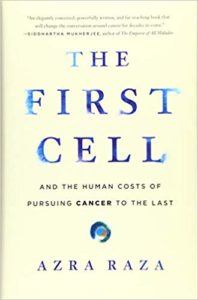 Raza argues that we have made little progress in fighting cancer over the last 50 years. The tools available to oncologists haven’t changed much–the bulk of the progress that has been made has been through earlier and earlier detection rather than more effective or compassionate treatment options. Raza wants to see a different approach from the current strategy of marginal improvements on narrowly defined problems at the cellular level. Instead, she suggests an alternative approach that might better take account of the complexity of human beings and the way that cancer morphs and spreads differently across people and even within individuals. The conversation includes the challenges of dealing with dying patients, the importance of listening, and the bittersweet nature of our mortality.
Raza argues that we have made little progress in fighting cancer over the last 50 years. The tools available to oncologists haven’t changed much–the bulk of the progress that has been made has been through earlier and earlier detection rather than more effective or compassionate treatment options. Raza wants to see a different approach from the current strategy of marginal improvements on narrowly defined problems at the cellular level. Instead, she suggests an alternative approach that might better take account of the complexity of human beings and the way that cancer morphs and spreads differently across people and even within individuals. The conversation includes the challenges of dealing with dying patients, the importance of listening, and the bittersweet nature of our mortality.